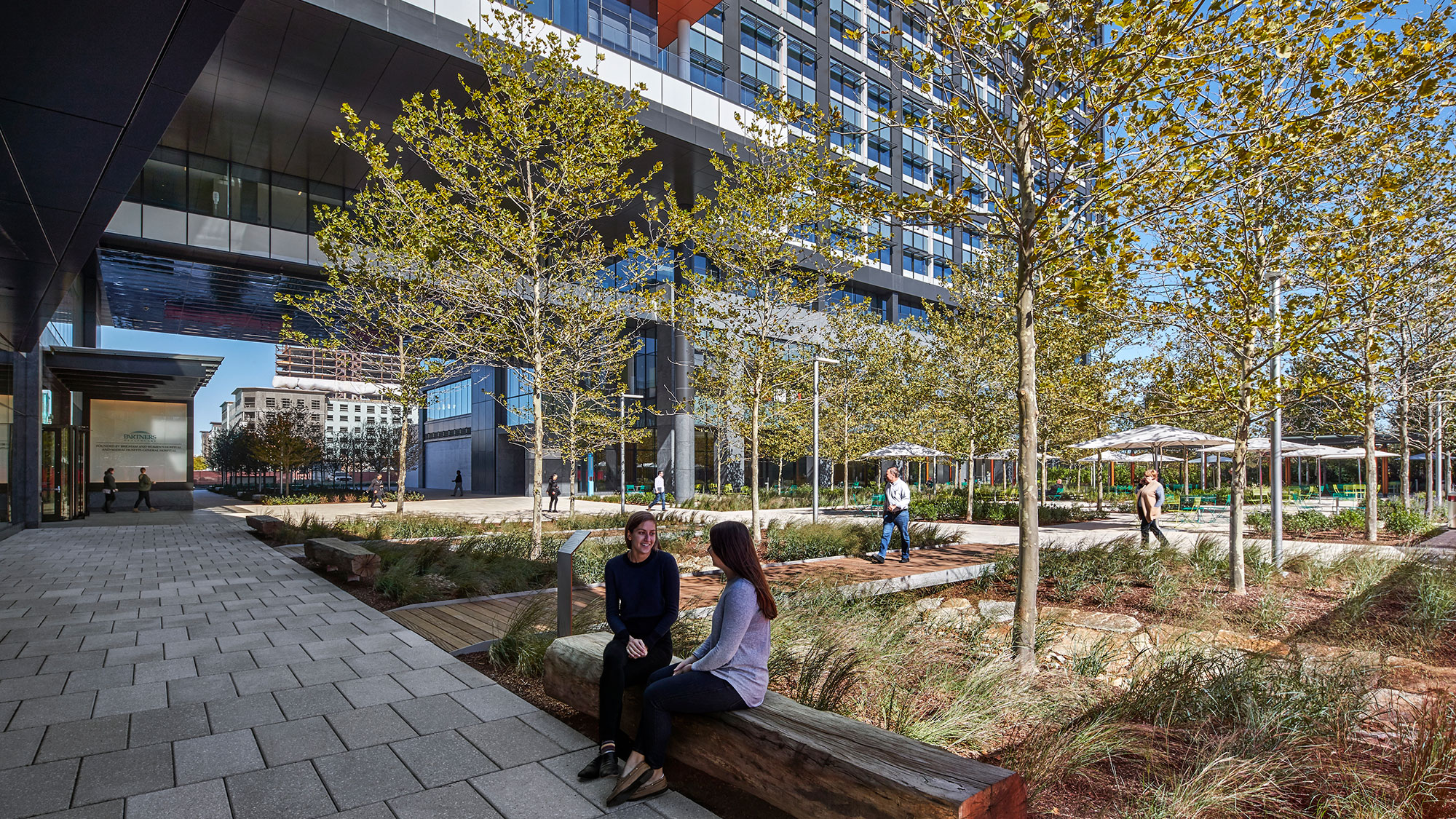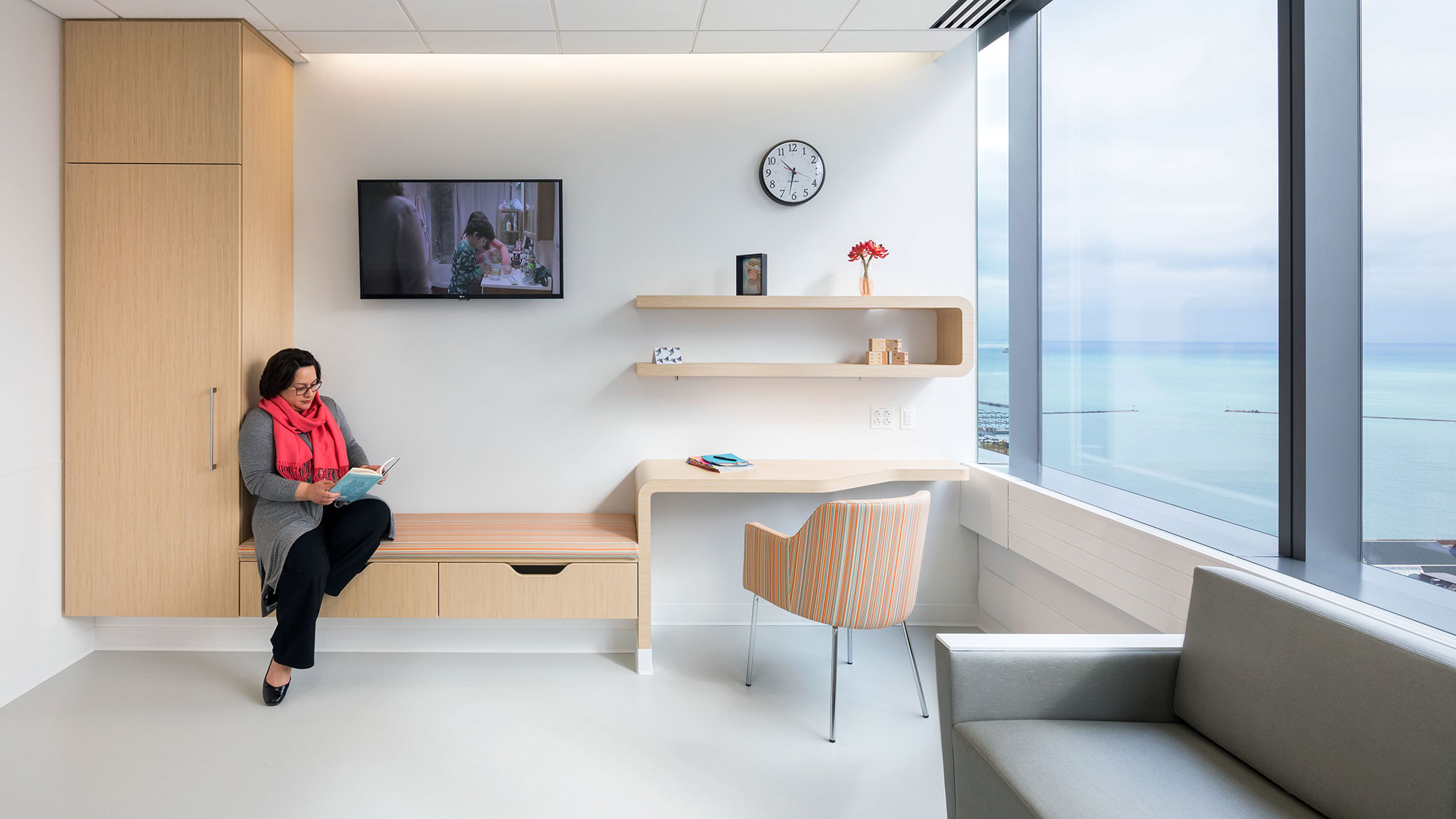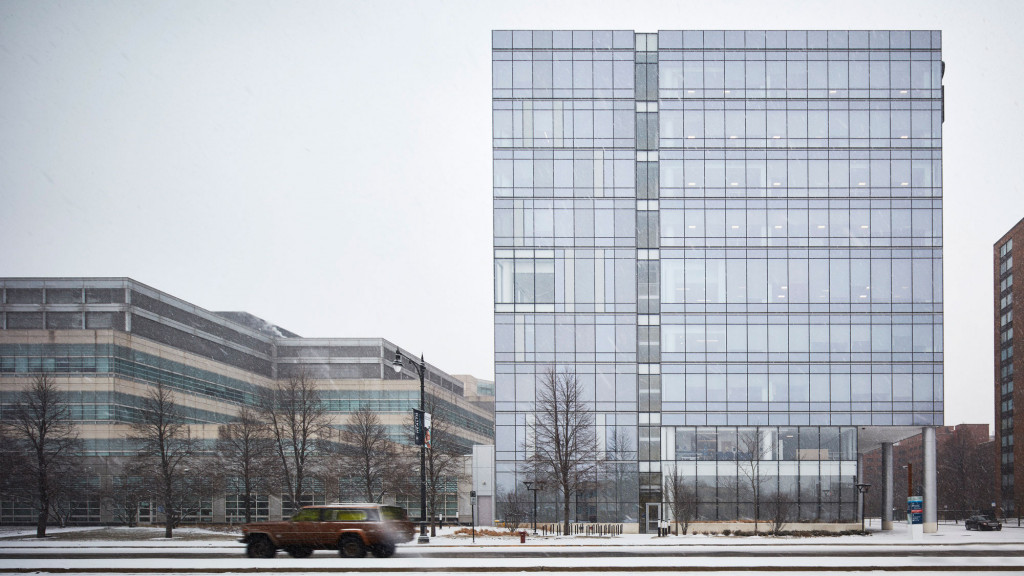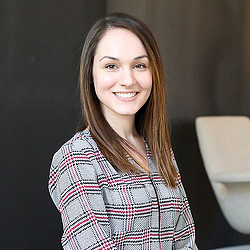Hospitals in an Age of Climate Change: Can They Survive the Storm?
By Michael Schur and Kelly Westwood
When Hurricane Dorian devastated the Bahamas, hospitals and medical clinics lost power, patients were evacuated, and many facilities were transformed into temporary shelters. The extent of the damage to the island’s infrastructure is still unknown, but the catastrophic storm signaled an important reminder for healthcare campuses in the age of climate change. In the face of extreme weather events increasing in frequency and ferocity, we must plan and design healthcare facilities that can assure quality care even when other basic infrastructure fails.
Severe weather events create surges of demand for hospitals while simultaneously threatening the continuity of care. Healthcare campuses, especially in vulnerable coastal areas, serve as frontier locations and experience the kinds of catastrophic shocks and stressors that mainland hospitals will also regrettably face. In this time of an adverse climate regime, the future of our cities hinges on the ability to deliver the highest standard of care in a time of chaos. Healthcare institutions need solutions that address the direct and indirect effects of damaging wind, torrential rain, flooding, unprecedented temperatures, and loss of power while ensuring all critical facilities remain operational and accessible. They must balance the needs of their patients with the realities of changing treatments, staffing, technological developments, infrastructure maintenance, and cost — to name just a few.

As our health often fails through attrition, so too will our buildings during prolonged times of crisis if we do not challenge how healthcare designs can passively operate. We have developed strategies that raise the quality of care during extreme failure scenarios and explore how these solutions can maintain patient safety. Employing design strategies that mitigate water risks for a long-term perspective, such as flood-proofing existing structures and placing all mechanical systems above the 100- or 500-year flood plan — coupled with new innovations in passive survivability — will extend the window of “failure mode care” from hours and days to perhaps months. Strategies such as on-site food and water storage; operable windows for natural ventilation; large and flexible spaces to accommodate for mass influx of causalities; and solar panels, hydrogen fuel cells, or wind turbines for on-site energy production will ensure the survivability of the complex — and enhance the comfort and safety of the occupants within.

We can develop a resilient hospital that provides the highest level of continuous care even during times of crisis by designing healthcare facilities that can shift from preventative/primary care to emergency care during disasters. By applying innovative passive solutions, we can create campuses that are resilient enough to operate when disconnected from the grid. If our healthcare facilities are nimble enough to adapt when disaster strikes and put the patient experience at the center, the hospital will serve the medical needs of our future cities and be a beacon of hope while weathering the storm.


